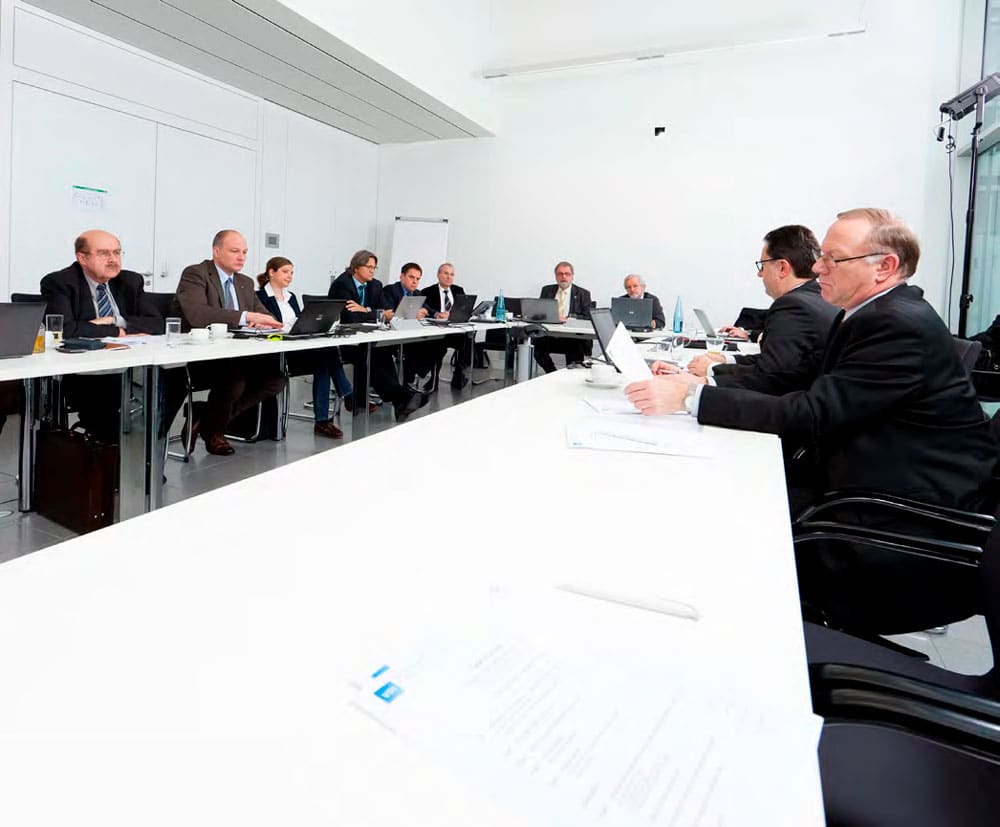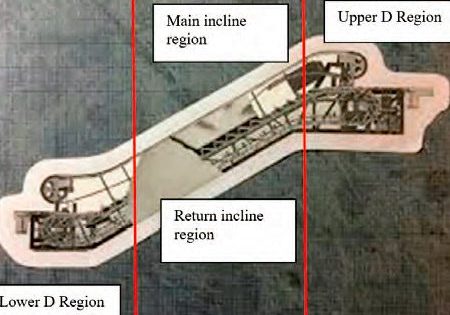VDI Standards Set in Germany
Jun 1, 2021

Engineers set the current state of the art
The Association of German Engineers (VDI, Verein Deutscher Ingenieure) is the third-largest German technical standardization body. It issues up to 250 standards per year from its portfolio of more than 2,200 valid VDI standards. They are trendsetting and practice-oriented technical rules that set quality standards in many crafts and industrial sectors. They represent the current state of the art, developed by experts for experts.
VDI standards typically consist of a scope, definitions, explanations of the various techniques, procedures and test methods with final documentation. Thus, the answers to the questions of who, where, what, when, how and why are contained in VDI standards. Many also contain annexes with tables or checklists that help, for example, to follow sequences in a procedure or to solve problems by means of a tree diagram.
Participating Entities Within VDI
VDI was founded on May 12, 1856, in Alexisbad, Harzgerode, Germany; its headquarters are now located in Duesseldorf, Germany. With approximately 140,000 members, VDI is Germany’s largest technical/scientific association. Members have access to networking opportunities in 45 VDI Regional Associations. Every year, more than 12,000 honorary experts work on the latest findings in 12 VDI technical societies with 50 technical divisions and about 600 committees.
One of these is the VDI Society Civil Engineering and Building Services (Gesellschaft Bauen und Gebäudetechnik, or GBG – please see the sidebar interview with Frank Jansen). It links the disciplines of architecture, civil engineering, building services (Technische Gebäudeausrüstung, or TGA) and facilities management. Elevator technology is assigned to TGA, which is steered by a Technical Advisory Council.
The Technical Committee on Elevator Technology (Fachausschuss Aufzugstechnik, or FA AUF) plans and coordinates the activities on elevator technology. FA AUF is chaired by Klaus-Peter Kapp and deputized by Horst Schickor. The members of the FA represent the areas of planning, installation, operation, science and teaching, testing, organizations, authorities and manufacturers, as well as fire-protection experts for VDI 6017 and physicists (acoustics) for VDI 2566.
The FA constantly cooperates with such national and international organizations as:
- The Associaton for Elevator Technology (Verband für Aufzugstechnik, or VFA)
- The Federation of Medium-sized Elevator Companies (Vereinigung Mittelständischer Aufzugsunternehmen, or VmA)
- The Mechanical Engineering Industry Association (Verband Deutscher Maschinen und Anlagenbau, or VDMA)
- The European Lift Association (ELA)
FA AUF has formulated the following as its objectives: stimulation, promotion and carrying out of technical/scientific work; cooperation between science and practice; exchange of experience; dissemination of expert knowledge; and interaction with the other TGA crafts. FA AUF further uses the following measures: statements on current topics; publication of VDI standards; technical sponsorship of expert conferences for education and training; cooperation with national and international associations; and training courses with external partners according to VDI 2168.
Topics are currently: education and training (VDI 2168); fire protection (VDI 6017); data exchange (VDI 6013); energy efficiency (VDI 4707); emergency alarm management (VDI 4705); and acoustical design (VDI 2566). Currently established as VDI standard committees are:
- Acoustical design for elevator systems with or without machine room
- Operation of building services systems – Elevator systems
- Elevators – Emergency alarm management
- Elevators – Energy efficiency
- Barrier-free and handicapped-accessible living spaces – Requirements for electrical and transport systems
A current, specific example of an ongoing work on VDI standards is VDI/bs 2552, sheet 11.5 BIM – Elevator technology (see sidebar interview with Andreas Pilot).
Life Cycle of a VDI Standard
Every VDI Standard starts with a good idea, which then turns into a VDI standards’ project. An expert proposes a topic to VDI-GBG, and, if the responsible FA and Technical Advisory Council both give a positive vote, work on the standard begins. The creation process of a VDI standard is precisely defined in VDI 1000:2021-02, VDI Standardisation Work: Principles and Procedures. The first step in the creation process is the establishment of a committee in which, according to VDI 1000, all stakeholders, including users (usually totaling 10 to 20 participants) are represented. Based on their knowledge and experience, these experts create a first draft, the so-called “green print.”
At the first meeting — the so-called constituent meeting — the committee defines the planned contents of the standard and a structure. Until every upcoming meeting, which is held two to eight times a year, the committee members do their homework on their main topical focus. Many aspects are contributed and discussed at the meetings because, for example, the views of an architect, an operator and a surveyor on an elevator topic differ significantly. However, a consensus shall be found in the VDI standard. After about 10 to 15 meetings, i.e., after two to three years, the draft of the VDI standard is available.
VDI 1000 also stipulates that anyone can submit objections to the contents of a draft. This “public objection period” usually runs for six months. The standards committee reviews all comments submitted before the deadline and, if necessary, includes them in the final VDI standard, the so-called “white print.” After five years at most, VDI 1000 imposes a review of the contents of the VDI standard, and the committees decide on extension, withdrawal or revision – and, in the latter case, the process starts all over again.
Each VDI standard, whether green or white print, can be purchased individually in paper form or as a standard download via PDF from Beuth Verlag in Berlin, Germany. They are included by subscription in the VDI Handbook Elevator Technology, a compact original text collection of all VDI standards relevant to the topic of elevators, which can also be obtained from Beuth Verlag.
Legal Appraisal
VDI standards are Recognized Rules of Technology (Anerkannte Regeln der Technik, or aRdT), as are, for example, DIN standards including DIN EN and DIN ISO. For a rule of technology to be considered an aRdT, three essential conditions shall be met:
- Independence and balance: By means of a transparent, traceable procedure according to VDI 1000. Through DIN 820, it is ensured that all stakeholders are represented in a well-balanced manner.
- The Public: The experts of the stakeholders shall be able to influence the contents of the aRdT. This is what the drafting process is for: A draft is published and made known via the industry media. Anyone can submit a comment on it. The standard committee has to assess this comment and inform the objector individually of the committee’s decision on the comment. Only then will a “final” version be published.
- Timeliness: After a maximum of five years, as a rule, it has to be checked whether the aRdT up to that point is still up to date. Technology continues to develop; the paper would not. The aRdT can be confirmed as it stands for another five years, or it can be revised or withdrawn.
If the conditions are met, the assumption is that the result of the work is an aRdT; legally, a presumption of conformity. An aRdT represents those principles and solutions that are recognized by science as theoretically correct, tested and proven in practice, and accepted by the majority of practitioners.
Codes, on the other hand, are issued only by the legislator or ordinator, i.e., the state, and not by civil-law corporations such as VDI and DIN. Their works are recommendations of technical content under civil law. However, this does not diminish their legal significance in any way, precisely because they are assumed to have the status of aRdT with the associated presumption of conformity.
An expert shall be familiar with the aRdT in his field, and the application of an aRdT does not release him from liability. Deviations from an aRdT are permissible, provided they offer the same safety. A VDI or DIN standard, for example, can be turned into a regional, national and European regulation if it is adopted as such by a legislator or ordinator.
DIN is the largest and best-known standardizing body and has a state treaty that allows it solely to represent Germany in standardization to the international community. VDI standards can be submitted as working papers to European and international standardization committees, which is one of the reasons why the final versions are published bilingually in German and English.
Further information including a database can be found on the VDI website at vdi.de/en/home/vdi-standards.
Relevance for Elevators
Your author (USB) interviews Frank Jansen (FJ), Secretary of VDI Society Civil Engineering and Building Services (GBG).
USB: Which relevance do elevators have for buildings?
FJ: Everyone uses elevators. They are an engineering achievement visible to everyone and are central because they are used to enable and direct traffic in a building. They enable all people, including those who are less able to walk, to access the building and, in an emergency, to escape from it.
USB: Which role are elevators playing in the VDI-GBG?
FJ: They play an important role throughout the entire life cycle of buildings. In this regard, they extend beyond the classic crafts of heating-ventilation-air-conditioning in a building. They are one of the interfaces between civil engineering and mechanical engineering in a building. This is where the VDI-GBG regards its main task, as enabling and supporting an interdisciplinary approach to the four specialist areas of architecture, civil engineering, building services and facility management.
USB: And from this, then, also arises the importance of the VDI standards on elevator technology?
FJ: Yes, exactly. They provide guidance for all those who tender, plan, construct and operate buildings. They set standards for high-quality, modern buildings. As an example, I would mention VDI 6017 fire recall systems for lifts, which ensures the functioning of elevators in the event of fire in order to save lives.
USB: Of these, which are best known and most widespread, e.g., VDI 4707 Energy Efficiency?
FJ: The top performers are actually VDI 4707 on energy efficiency, which has, after all, also gained recognition throughout Europe and the world. VDI 4705 Emergency Alarm Management of Lifts is also widely used and accepted.
USB: Which of the VDI standards are you currently working on?
FJ: The VDI 4705 Emergency Alarm Management from May 2013 that I just mentioned is currently up for revision; the project application has already been submitted. VDI 2168 on the personnel qualification for lifts is also due for revision, but it is not expected to be published until 2023. The third one in this group is VDI 3809, Part 2, Firefighters’ lifts, dated October 2014; it is expected as early as 2022.
USB: Are there any other activities and/or plans in the elevator field?
FJ: Unfortunately, we are a bit slowed down by the pandemic at the moment. Some other topics of the VDI-GBG are highly relevant, e.g., the topic of ventilation and air-conditioning and, of course, due to the circumstances, we had to completely reorganize our committee work. But the other good, new ideas are just frozen at the moment, and we will hopefully be able to tackle important and innovative topics in elevator technology again soon. Please feel free to contact us if you have any questions, requests or suggestions regarding VDI standards. You can reach us at any time by mail at [email protected].
BIM Manager Andreas Pilot on Requirements
Your author (USB) brings out Pilot’s (AP) statements on exchanges.
by Undine Stricker-Berghoff
USB: Mr. Pilot, would you please introduce yourself.
AP: I have been a graduated architect since 2008 and work as a project manager and BIM manager. For more than 20 years, I have also managed IT companies; I am an owner and managing director. In addition, I am a research associate at the TU Darmstadt and head of the interdisciplinary BIM Studio. Architecture is my passion, and the combination of IT and architecture offers a great potential to make good designs an even better built reality. By networking with other crafts in construction early on, critical points are discovered and resolved, both at an early stage.
I am a co-founder of BIM AG and actively involved in various networks and working groups on BIM, including buildingSMART. I am chairman of the committee for the development of the VDI standard VDI/bs 2552 Part 11.5. The combination of these two institutions is reflected in the title of the VDI standard “VDI/bs”; this means that buildingSMART is a co-sponsor of the VDI standard.
USB: Who had the idea for this standard? Was there a special reason?
AP: The journey started in 2017 with an invitation from the German Mechanical Engineering Industry Association (Verband Deutscher Maschinen- und Anlagenbau VDMA) to a meeting at the Building Technology Forum on the topic of BIM. There, general questions about BIM were discussed such as:
- How can I standardize the processes?
- How can I keep the data flexible?
- What is the international development like?
This led to the formation of a group focusing on elevators. Among other things, it wanted to answer the question of what data elevator planning needs from elevator construction. A digital test project was carried out and required data systematized. When this had matured appropriately, talks with VDI regarding standardization were initiated in 2018. It is currently becoming apparent that the German Institute for Standardization (Deutsches Institut für Normung DIN) will adopt the superordinate BIM roadmap, but that the VDI 2552 standard, in particular the Parts of the 11 series, will be very practice oriented.
USB: Who is represented on the standard committee?
AP: According to VDI 1000, all stakeholders shall be represented in a VDI standard committee. In the case of VDI/bs 2552 Part 11.5, these are those involved elevator planning and manufacturing, building operation, object planning and architecture, as well as software development and also universities. SMEs make up a significant proportion of the elevator manufacturers on the committee.
USB: When did work on the paper start? What stage have you reached with the work? And when do you expect the green print (draft) to be released?
AP: The constituent meeting took place on February 27, 2020. Already at the end of 2020, we have passed the first draft, which is currently being edited in VDI. We expect the green print to be available in the 2nd quarter of 2021. The objection period is six months. In parallel, we are currently conducting prototype testing with digital models.
USB: What are the goals of the standard?
AP: The VDI standard aims to provide standardized requirements for specialized models of elevators and buildings and to define all model-based interdisciplinary processes around these models in elevator planning. In the future, these exchange processes should be fully automatable, so that no one has to type in or transfer data anymore but that they are available at the right place without any need for consultation. Therefore, it is important to the committee that the contents of the standard itself are also machine-readable.
USB: On which preliminary work is this part of the standard based?
AP: Parameters and attributes of elevator technology were already compiled in the BIM group for elevator technology in VDMA. In addition, it was discussed at what moment in time they are required. The long list was reduced and “tailored” for the VDI standard in relation to the “elevator planning” use case.
We also consulted the “manual” VDI 2552 Part 11.1 on the parts of the 11 series of VDI 2552. It contains information on the procedure for preparing such a part of a VDI standard and its structure. In return, we have also contributed suggestions for supplementing Part 1 from our experience in its use.
Part 11.2, which deals with vents and openings for building services, among other things in walls and ceilings, also had an influence. Here, we even submitted a so-called “objection” regarding an extension of the part, since from our point of view, the processes described therein can also be applied to other types of openings, such as doors. Both occur in the interaction of elevator planning and building planning.
The terms from the EN 81 series and the Lift Directive (LD 2014/33/EU) also played a role. Elevators and lifting equipment according to the Machinery Directive were not dealt with for a start.
USB: What contents can be found in the standard?
AP: Everything that is needed for the interdisciplinary planning of elevator systems. The three phases of preliminary planning, tender planning and order planning are covered. Operation and maintenance of elevators will probably be found later in a separate part. It was decided to deal first with the phase in which the models are generated. There is much to be gained from the very beginning. The central question “How large is the shaft?” can now be answered early on by manufacturers using virtual three-dimensional bodies for the space requirements of the shafts.
USB: To whom is the paper addressed?
AP: The target group is broad. It includes the areas of elevator planning in planning offices and with manufacturers, as well as object planning in architectural offices. And, of course, software companies that want to know what they have to program for whom. They learn who provides what data and how they shall be edited for openBIM processes.
USB: What are the advantages of using the VDI standard?
AP: The shell is often already in place when the elevators are commissioned. The standard procedure described in the VDI standard part should find its way into the planning early on and in an automated way. BIM can prevent subsequent adjustments to the shell. This saves time during construction and avoids additional costs. Elevators are no longer “forgotten.” The inhibition threshold to deal with them is lowered. By means of BIM, you can know as much as you need to know as early as possible and then implement this in the architecture in a manufacturer-neutral manner.
Get more of Elevator World. Sign up for our free e-newsletter.









